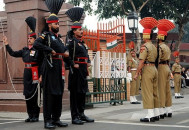Electricity costs: To save the textile sector a few pennies, the rest of us feel the squeeze
Govt provides cheap fuel to industries, while depriving power utilities of gas.

For most medium and large-scale textile units, electricity forms less than 3% of the total cost of production. Yet in order to help the powerful textile lobby save on that 3%, the government has decided to direct gas supplies away from the power sector, raising the costs of electricity for the rest of the country.
“Electricity constitutes hardly 3% of the total operating costs. If I’m selling one metre fabric for Rs70, the electricity component of it would hardly be Rs2,” said Wahid Tumbi, director of sales and marketing at Orient Textile Mills, a Karachi-based, medium-sized weaving mill, which is part of the Ebrahim Group of Companies.
In the last five years, the allocation of gas – the cheapest fuel – for the power sector has been reduced from 43% to 22%, according to Tayyab Tareen, chief financial officer of the Karachi Electric Supply Company. Most of that reduction has come due to the fact that the government has ordered the two state-owned gas distribution companies – Sui Northern Gas Pipelines and Sui Southern Gas Company – to redirect their gas supplies to the captive power plants installed by most textile companies.
“For the past 10 years or so, most factories have switched to gas-powered electricity generation plants,” said Zulqarnain Jafri, regional manager at Allied Engineering and Services, the authorised dealer for Caterpillar machinery and equipment in Pakistan and Afghanistan.
This is despite the fact that, of all the components of a textile factory’s costs, electricity is by far the smallest.
“If you look at the cost breakdown of the finished product, electricity is its smallest part. The cost of cotton is roughly 48-50%. Spinning, weaving, printing, labour and overheads form about 15%, 10%, 12%, 5% and 6% of the total costs, respectively. Electricity is just 2-3%,” Tumbi said.
Most power distribution companies in the country charge lower rates from their industrial consumers, a cross-subsidy that they make up for by charging commercial and residential consumers more. In Karachi, for example, the KESC charges the average industrial consumer about Rs8.50 per kilowatt-hour.
However, that cost is still lower than the Rs5.50 per unit that it costs textile companies to produce power from their captive gas-fired power generators.
“In the initial years, the cost of electricity can be as little as Rs4.50 per kilowatt. The per-unit cost increases over years though, because of maintenance issues,” Jafri said.
The power companies, particularly KESC, have been lobbying the government to stop allocating gas to the captive power units at the textile factories (as well as other industrial units). Power company officials say that most of those plants, because they are smaller, operate at between 18% and 20% efficiency, compared to the 47% efficiency that KESC has achieved in most of its plants.
As a means of enticing the government – and the powerful textile lobby – to listen to their demands, KESC has promised that it will no longer have any power outages in the industrial areas of Karachi. Textile industry insiders acknowledge that KESC has in fact delivered on this promise, but still refuse to give the utility credit.
“KESC doesn’t subject its industrial customers to electricity load-shedding anymore. But KESC is not only unreliable, it’s also unfeasible. It’ll cost us dearly if a power loom breaks down because of a voltage surge or power interruption by KESC,” said Tumbi, apparently unaware of the existence of stabilisers and surge protection equipment. “We run our factory solely on our own power generation plant, as it’s far more feasible than KESC.”
KESC claims that if it gets about 276 million cubic feet of gas per day (mmcfd), it can end power outages in Karachi. Currently, the utility is getting around 180 mmcfd. Meanwhile, the industrial sector is getting about 120 mmcfd to run its less efficient captive power generation units. Supplying gas to the textile sector saves the powerful lobby a few hundredths of a percentage point on their total costs, but ends up increasing the costs of electricity for the rest of the country as utilities turn from gas, which costs Rs5.3 per unit, to oil, which costs Rs18 per unit to produce electricity.
Since the government does not allow power prices to rise to that level, it is forced to promise subsidies to the power companies, spending over Rs1 trillion to subsidise the power sector. However, even that amount was not enough and an estimated Rs300 billion in additional government liabilities has financially crippled the energy sector through the inter-corporate circular debt.
Yet far from discontinuing a flawed policy from the Musharraf administration, the current government also appears to be just as enamoured the textile and industrial lobby. Petroleum Minister Asim Hussain recently proposed a new gas tax, which would raise gas prices for the fertiliser sector (which uses gas as a feedstock) by a whopping 94%, but only by 3% for the captive power plants of industrial units.
Published in The Express Tribune, November 7th, 2011.



















COMMENTS
Comments are moderated and generally will be posted if they are on-topic and not abusive.
For more information, please see our Comments FAQ